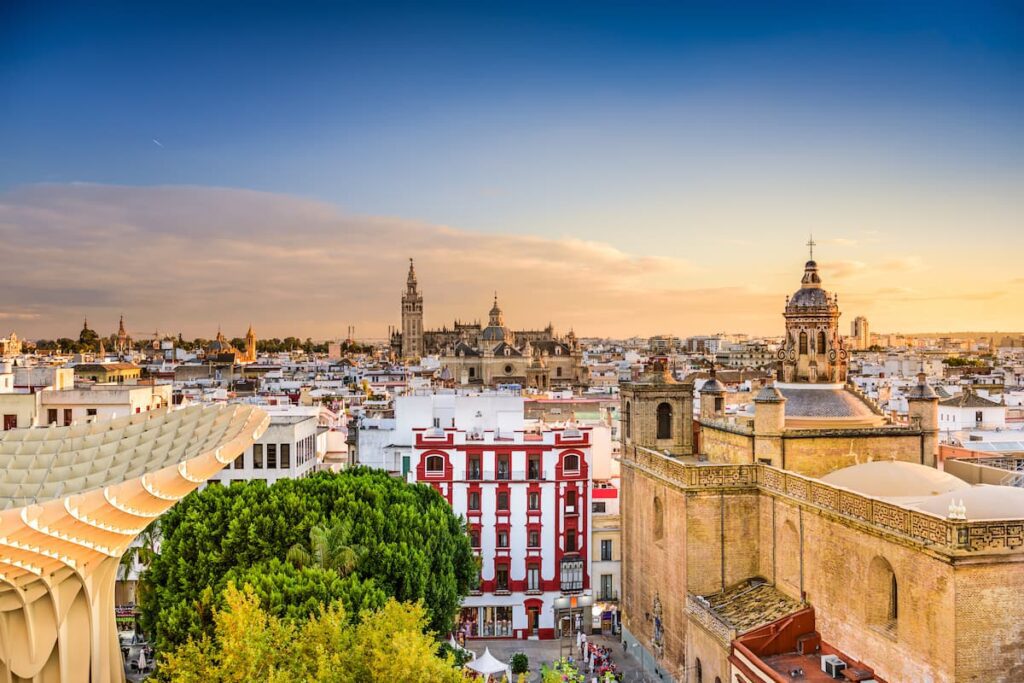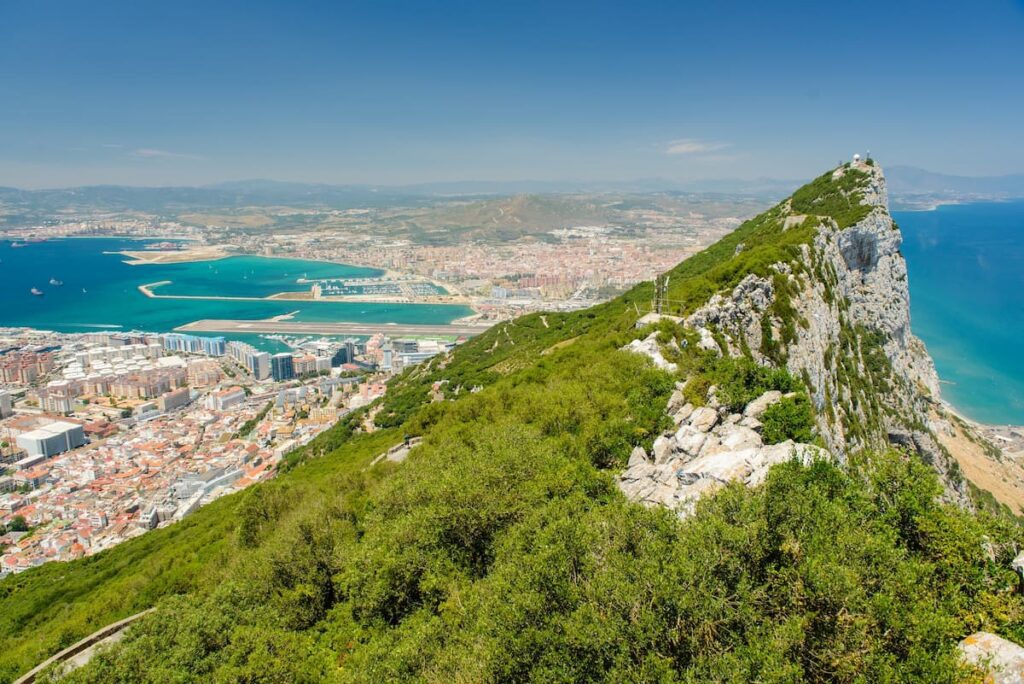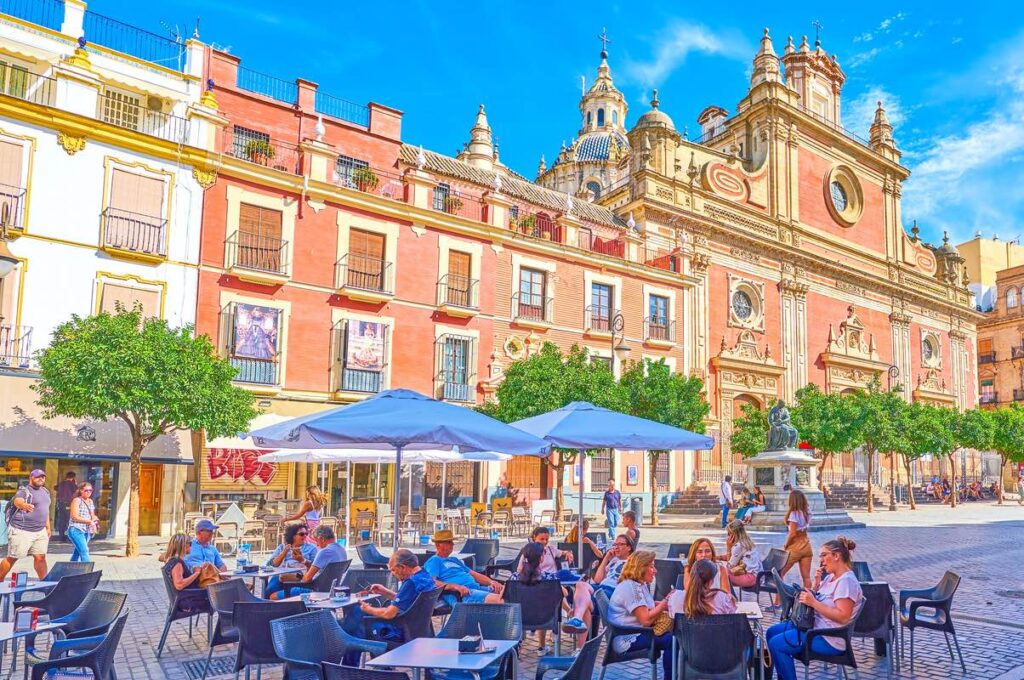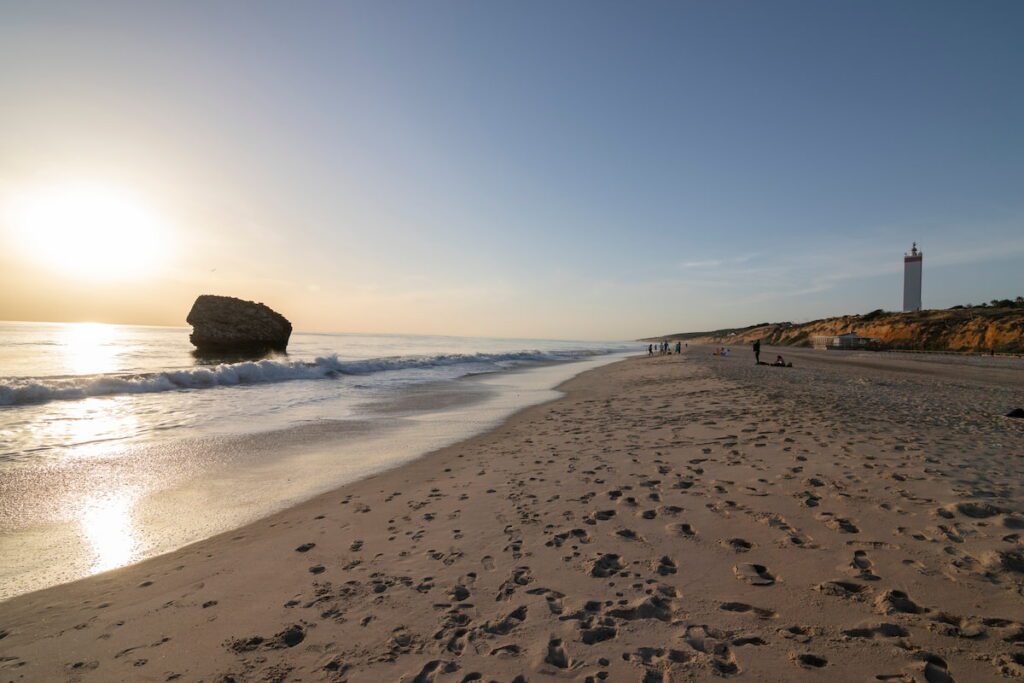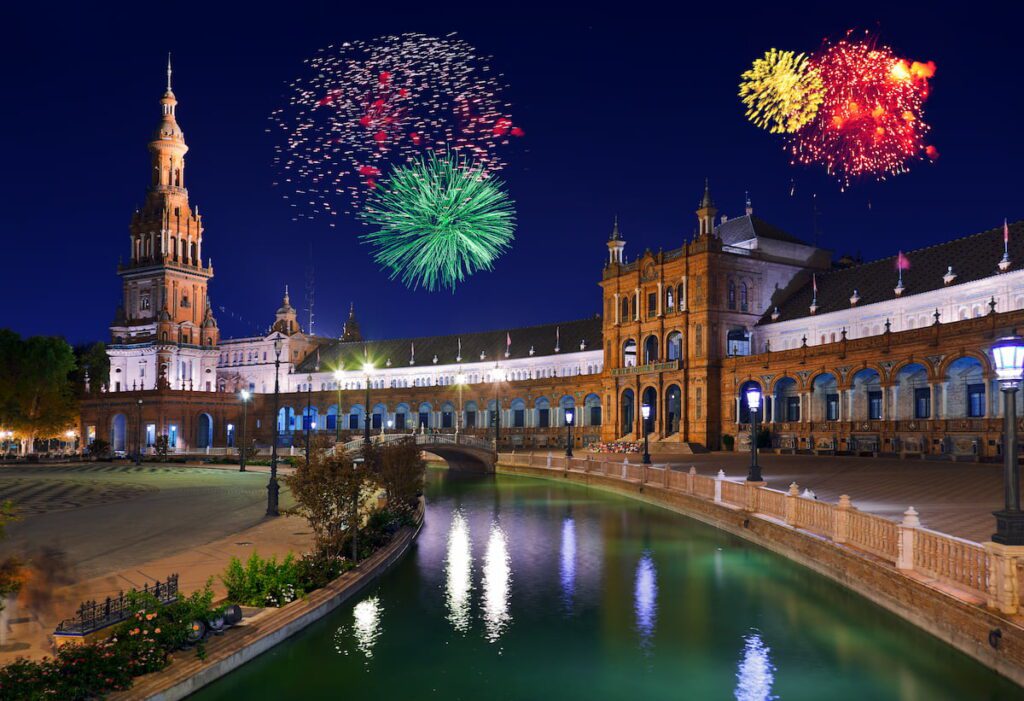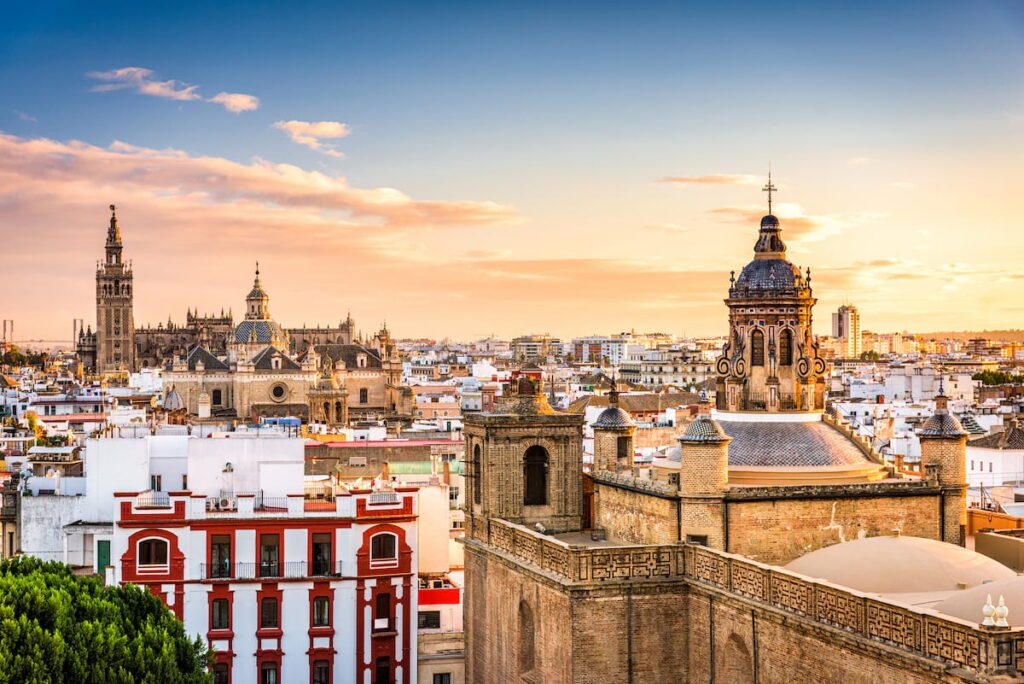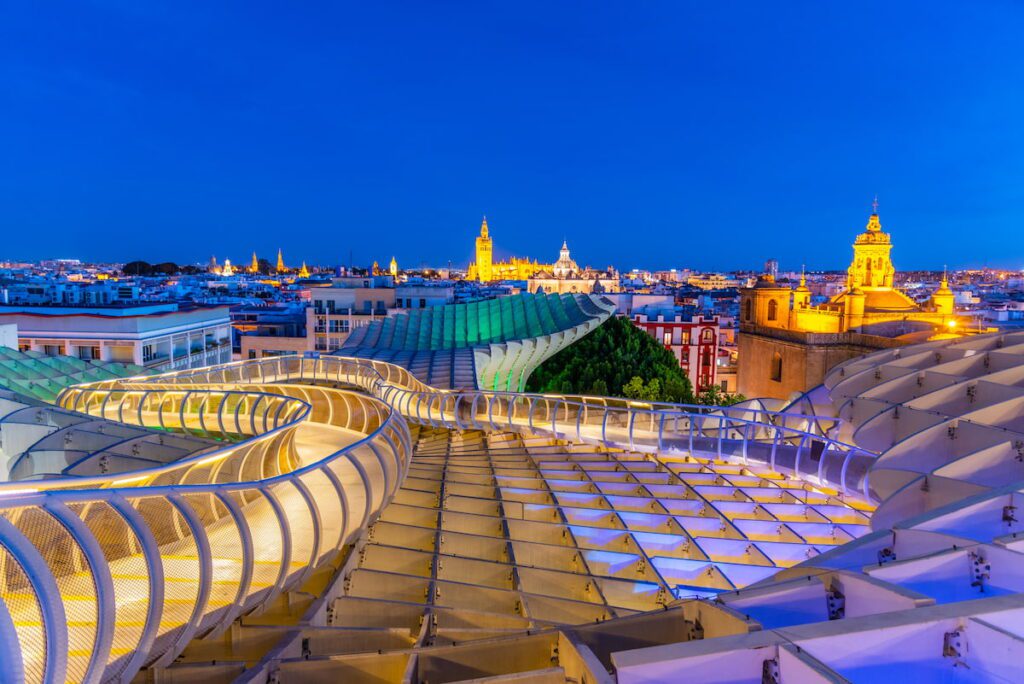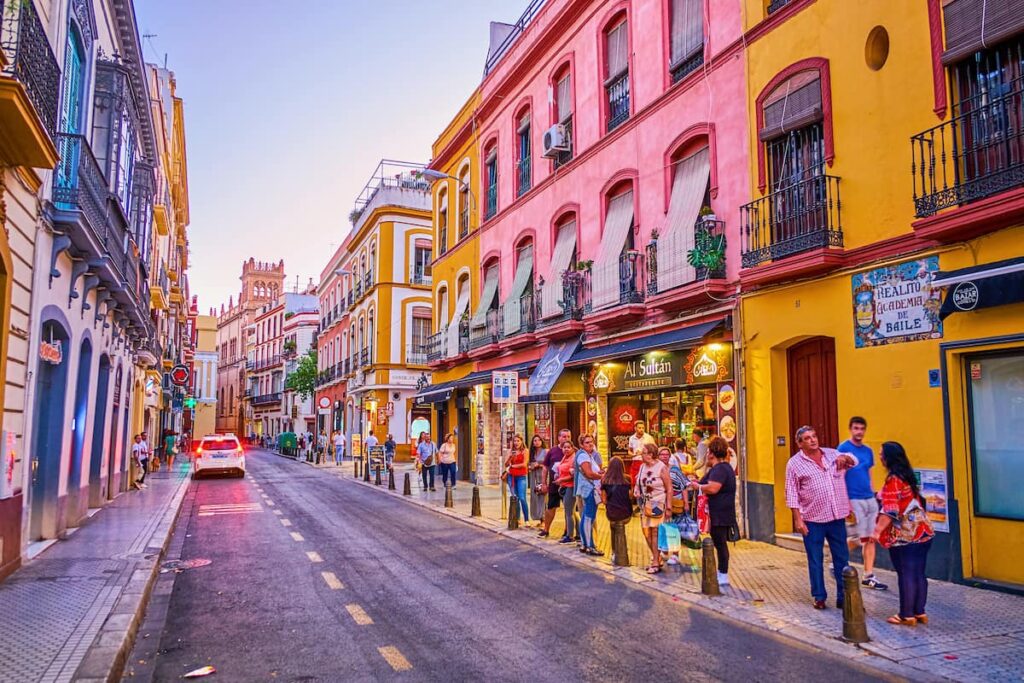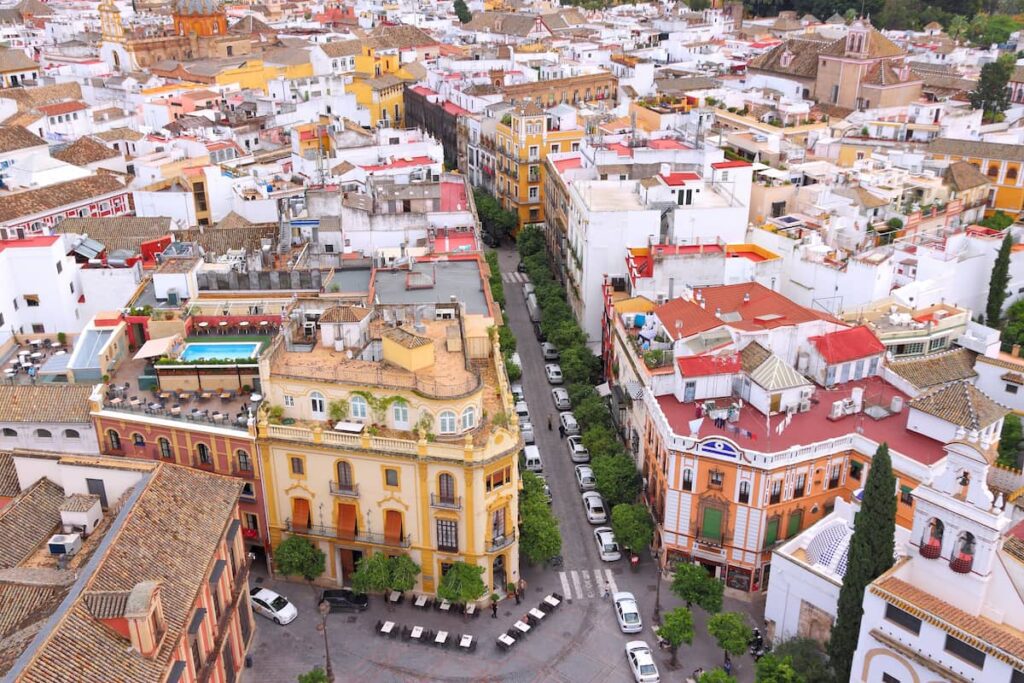Seville Travel Guide
This article may contain affiliate/compensated links. For full information, please see our disclaimer here.
Welcome to Seville, a city that exudes charm and history with its stunning architecture, delectable cuisine, and lively flamenco culture. With its intriguing combination of ancient history and modern flair, Seville is a destination in Spain that will capture your heart… as it did mine!
I’ve visited Seville three times now and each time, I discover something new to love about this vibrant city. Whether you’re exploring one of the largest Gothic cathedrals in the world, taking in the stunning views of the city from the quirky Las Setas, or savoring some tapas and local wines, Seville will captivate you with its beauty, authenticity, and passion.
Read on to learn more as I share my essential Seville travel tips so that you can plan your dream trip!
Seville Facts and Figures
Today, Seville is recognized as one of the most beautiful and culturally rich cities in Spain, with a deep history and heritage that continues to attract visitors from around the world.
Here are some interesting facts about this beautiful city.
- Seville is the capital and largest city of the autonomous community of Andalusia in southern Spain, with a population of over 690,000 people.
- Seville was founded as the Roman city of Hispalis in the 2nd century BC and later became a major center of commerce and culture during the Islamic period.
- Seville played an important role in the Age of Discovery, with Columbus setting out from the city on his second and fourth voyages to the Americas.
- During the Golden Age of Spanish literature, Seville was home to many prominent writers and artists, including the playwright Lope de Vega and the painter Diego Velázquez.
- Seville was a center of political and cultural resistance during the Spanish Civil War, and many of its historic buildings were damaged or destroyed during the conflict. The city has since undergone extensive restoration and renovation, including the restoration of the Alcázar of Seville, which suffered damage during the war.
- Seville hosted the 1992 World Exposition, which brought major infrastructure improvements to the city and helped to boost its tourism industry. The Plaza de España, a grand plaza in the Parque de María Luisa, was built for the exposition and features elaborate tilework and a moat. Today, it’s one of the city’s main tourist attractions.
- Seville is known for its hot and dry summers, with temperatures regularly exceeding 40°C (104°F) in July and August.
- The Cathedral of Seville is the one of the largest Gothic cathedrals in the world and is the final resting place of Christopher Columbus.
- The Alcázar of Seville is a royal palace originally built by the Moorish rulers of Andalusia and is now a UNESCO World Heritage Site.
- Seville is famous for its cuisine, including dishes such as gazpacho, salmorejo, and pescaíto frito (fried fish).
- Flamenco, the traditional music and dance of Andalusia, originated in Seville and is still a vibrant part of the city’s culture today.
- Seville is the setting for many famous works of literature, including Don Juan by Lord Byron and The Barber of Seville by Pierre Beaumarchais.
- Seville has a rich history of bullfighting, with the Real Maestranza de Caballería de Sevilla being one of the most prestigious bullrings in Spain.
- The University of Seville is one of the oldest universities in Spain, founded in 1505 by Cardinal Francisco Jiménez de Cisneros.
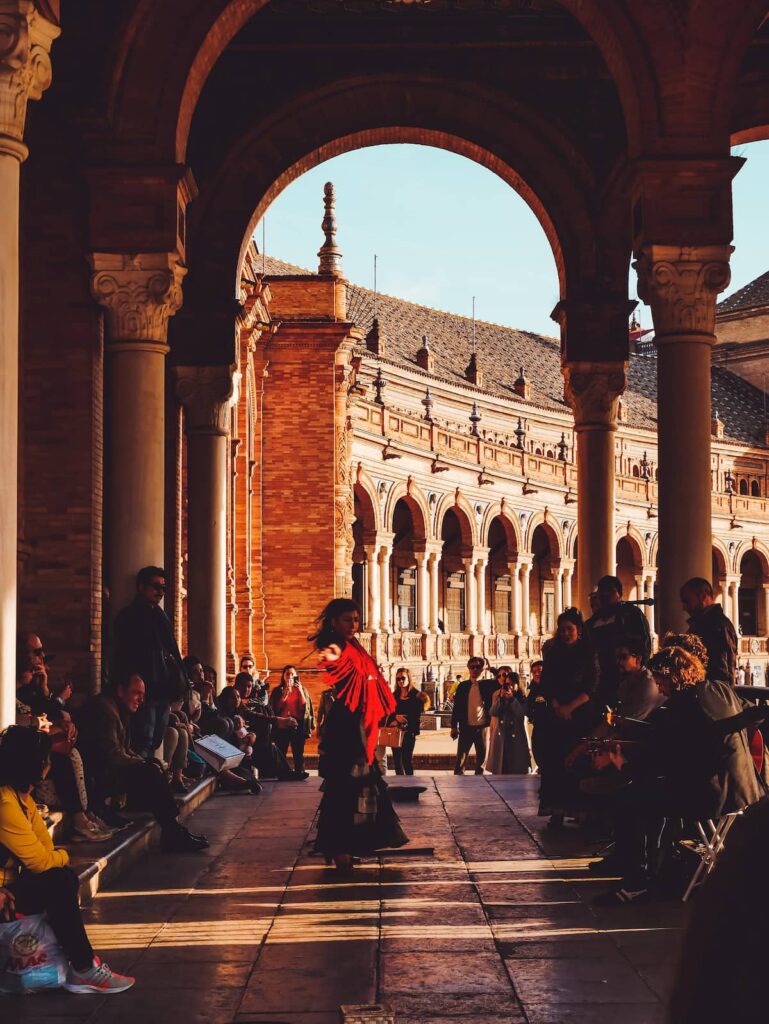

Visiting Seville, Spain: Travel Tips
Here’s what you need to know to plan your trip to Seville.
Getting to Seville
Seville is a major hub for transportation in southern Spain, with an international airport and high-speed rail connections to Madrid and other cities so it’s super easy to get here.
Travelling from Cadiz to Seville? Then check out our Cadiz-Seville transport guide for everything you need to know.
By Plane
If you’re coming from outside of Spain, it’s best to fly into the city. Seville has its own international airport, the Seville Airport (SVQ), which is located about 10 km from the city center. It offers direct flights from many European cities, as well as some destinations in North Africa.
There are also some domestic flights from other Spanish airports but depending on where you’re coming from, you may be better off taking a train or bus versus flying (more on that next!).
The Seville airport is pretty small so don’t expect much on top of the basic services and amenities.
By Train
Seville is well-connected by rail to other cities in Spain, including Madrid, Barcelona, and Malaga. The Santa Justa train station is located about 2 km from the city center.
Here are approximate travel times for trains to Seville from other major Spanish cities:
- Train from Madrid to Seville: The AVE high-speed train connects Madrid and Seville in about 2.5 hours, making it the fastest way to travel between the two cities. I’ve done this journey before and it’s super comfortable and fast – I would highly recommend it!
- Train from Barcelona to Seville: The fastest way to travel from Barcelona to Seville is by AVE high-speed train, with a travel time of about 5.5 hours.
- Train from Valencia to Seville: The travel time between Valencia and Seville by train is about 6 hours, with direct connections available by high-speed train.
- Train from Malaga to Seville: The travel time between Malaga and Seville by train is about 2 hours, with direct connections available by high-speed train.
Tip: Travel times may vary depending on the specific train service, departure time, and any connections involved. It’s always best to check schedules and book your tickets in advance to ensure a smooth and efficient journey to Seville. Typically, tickets are available up to 4 months before your travel date. Head to the Renfe website (be sure to toggle to the English language for easy navigation) to search for your routes.
By Bus
Seville has a modern bus station, the Estación de Autobuses Plaza de Armas, which serves many domestic and international destinations.
The bus station is located not too far from the historic center and depending on where you’re staying, you may be able to walk there. If not, no worries. Ths bus station is also a local transportation hub and there are numerous public buses that serve the station (lines 3, 6, 21, 43, A2, A7, C3, EA).
You can search for and buy bus tickets online and the bus company will depend on your departing destination. ALSA, which runs services across Spain, is a good place to check first.
Travel times may vary depending on the specific bus service, departure time, and any connections involved but here are some estimated travel times:
- Bus from Madrid to Seville: The travel time between Madrid and Seville by bus is approximately 6 hours, with several bus companies offering regular services.
- Bus from Barcelona to Seville: The travel time between Barcelona and Seville by bus is approximately 14 hours, with direct connections available from some bus companies.
- Bus from Valencia to Seville: The travel time between Valencia and Seville by bus is approximately 10-12 hours, with some services requiring a transfer in Madrid.
- Bus from Malaga to Seville: The travel time between Malaga and Seville by bus is approximately 2.5 hours, with frequent direct connections offered by several bus companies.
As you see, taking a bus to Seville takes longer so if you’re short on time, then traveling by train is the best option. That said, bus tickets are cheaper so there is a trade-off.
By Car
If you prefer to drive, Seville is well-connected to other cities in Spain by highways and roads.
However, keep in mind that parking in the city center can be challenging, so it’s best to park outside and take public transport or walk. On my last trip of Seville, our car basically stayed in its parking lot during our entire stay there as we walked everywhere.
Getting Around Seville
Once you’re safely in Seville, getting around the city is easy. Most of the key tourist attractions and places of interest are located within Seville’s historic center, so the best way to get around is by foot.
You can easily plan your days to focus on specific areas if you’d like to minimize walking across the city. Walking around Seville is also an awesome way to get a taste of the city’s vibe and maybe even stumble across some hidden gems!
If you’d like to be a bit more mobile, there are bike and electric scooter rentals located around the city. It’s fairly inexpensive and what’s more, it’s a fun way to explore Seville! There are bike lanes available on the larger streets, although I don’t believe any are available within the historic center itself. If you do decide to go with an electric scooter, do note that the uneven ground in the historic center will make it a bit challenging to scooter quickly.
Seville has an efficient and modern public transportation system, including buses, trams, and a metro line. The public transport network covers most areas of the city and is relatively inexpensive. As a visitor, I would say that you’re most likely to use the tram or buses.
Buses in Seville
The bus system in Seville is extensive and easy to use. Bus stops are clearly sign-posted and you can buy a bus ticket when you board. Buses typically run from around 6.00am to 11.30pm and there are some night buses that run until 2.00am. At the time of publishing, a single-journey ticket costs €1.40.
There are also two transport card options that offer more value for money:
- Tarjeta Multiviaje is a rechargeable card (with a refundable deposit for the card) that can be use on buses and the tram. The minimum amount is seven euros and when using this card, each journey costs less than a single-journey ticket (under €1). You can buy and recharge a card at kiosks and estancos (tobacconists). This is ideal if you’re taking multiple bus or tram journeys during your Seville visit.
- Intended for short visits, Tarjeta Turista offers a one-day card (€5) or three-day card (€10) with unlimited travel. These can be purchased in the TUSSAM Information Points at Prado San Sebastián, Plaza Ponce de León y en Avda. Andalucía, 11. Like the Multiviaje, there’s a €1.50 deposit fee.
For more information on buses in Seville, visit the TUSSAM website.
Tram in Seville
Called the MetroCentro, the T1 tram is a short-distance tram with just 4 stops. It goes south from Plaza Nueva through the centre of the city (with a stop next to the Alcazar( to the San Bernardo train station.
A one-way ticket costs €1.20 and you can buy tickets at the machines on the tram platform (be sure to validate them when you get on the tram!). It’s cheaper if you have a Tarjeta Multiviaje card.
Taxis in Seville
Taxis are a convenient and efficient way to get around Seville, especially for if you are traveling in a group, have mobility issues, or when you need to travel with luggage. That said, there are some taxi drivers that take advantage of tourists so here’s what you need to know about taking a taxi in Seville.
Taxi fares in Seville are metered and are based on the distance traveled and time taken. There are additional charges for weekends, holidays, night journeys, and for carrying luggage. You can expect a taxi from the airport to the center of Seville to cost around €20. (Click here to see a breakdown of how tariffs and charges are imposed.)
There are taxi stands located throughout the city, including at major transport hubs, such as the airport, train station, and bus station. You can also flag down a taxi on the street, but it’s often more convenient to use a taxi stand to avoid any confusion or misunderstandings.
Taxis in Seville are generally safe and reliable, but it’s always best to take precautions when using any form of public transport. Make sure to only use licensed taxis, check the meter is running, and keep your belongings with you at all times.
Best Time to Go to Seville
In my opinion, the best time to visit Seville is during the spring (March to May) or autumn (September to November) months. During these periods, the weather is pleasant and comfortable, with warm days and cool nights. The crowds are also thinner, and prices for flights and accommodation are generally lower.
In spring, Seville is in full bloom with colorful flowers and lush greenery. This is the perfect time to visit the city’s many parks and gardens, including the famous Parque de María Luisa and the stunning Alcázar Gardens. The city also celebrates its annual Feria de Abril (April Fair) during this season, where locals and tourists come together to enjoy flamenco music, dance, and traditional food.
Autumn is another great time to visit Seville, as the weather is mild and perfect for exploring the city on foot. This is also the season for the annual International Film Festival of Seville, where film enthusiasts gather to watch the latest independent films from around the world.
I’ve visited Seville twice during the autumn months and it’s my favorite time to visit in terms of vibe, weather, and activities.
I would discourage you from visiting Seville in the summer months. Summer in Seville can be scorching, with temperatures often exceeding 40°C (104°F). The high temperatures can make it uncomfortable to explore the city during the day, and many locals take their holidays during this period. However, if you don’t mind the heat and crowds, summer can be a good time to experience the lively nightlife and outdoor events and festivals that take place throughout the city.
Winter in Seville is mild, with occasional rain and cool temperatures. If you’re looking to avoid crowds, then winter in Seville is for you. I’ve visited Seville in February towards the tail end of winter and loved my time there. It was still lively but not overly crowded and some days, with the warm sunshine on me, it didn’t even feel like winter! Learn more about winter in Seville in this article.
Overall, the best time to visit Seville depends on your preferences and travel style. Spring and autumn are generally the best seasons for comfortable weather, fewer crowds, and affordable prices. For a closer look at the weather in Seville and tips for enjoying the weather, read this article. You can also read our more in-depth article on the best time to go to Seville.
How Many Days to Spend in Seville?
Seville is lively and vibrant and there’s a lot to do here! On my first visit, I was in Seville for only 3 days and felt so sad to leave. I recommend spending at least three to four days in Seville to get a good sense of the city and its attractions. This timeframe would allow you to explore the historic center, visit the main landmarks, and experience the local culture and cuisine.
Ideally, if you have time to spare, I suggest 4 to 5 days in Seville as this would allow you to include a day trip in your itinerary. Seville to Cordoba is one of the most popular day trips and it’s well worth the effort – I’ve done it myself! Other day trip possibilities from Seville include the ancient Roman city of Italica or the charming town of Carmona.
However, if you’re short on time, it’s still possible to see the highlights of Seville in just a weekend (that is, 1 to 2 days). In this case, I recommend focusing on the must-see attractions and planning your itinerary carefully to make the most of your time in the city.
- Check out our One Day in Seville Itinerary to help you plan the perfect day!
- Have more time? Then our Seville 2-day itinerary might work for you
- For the ideal trip, spend 4 days in Seville
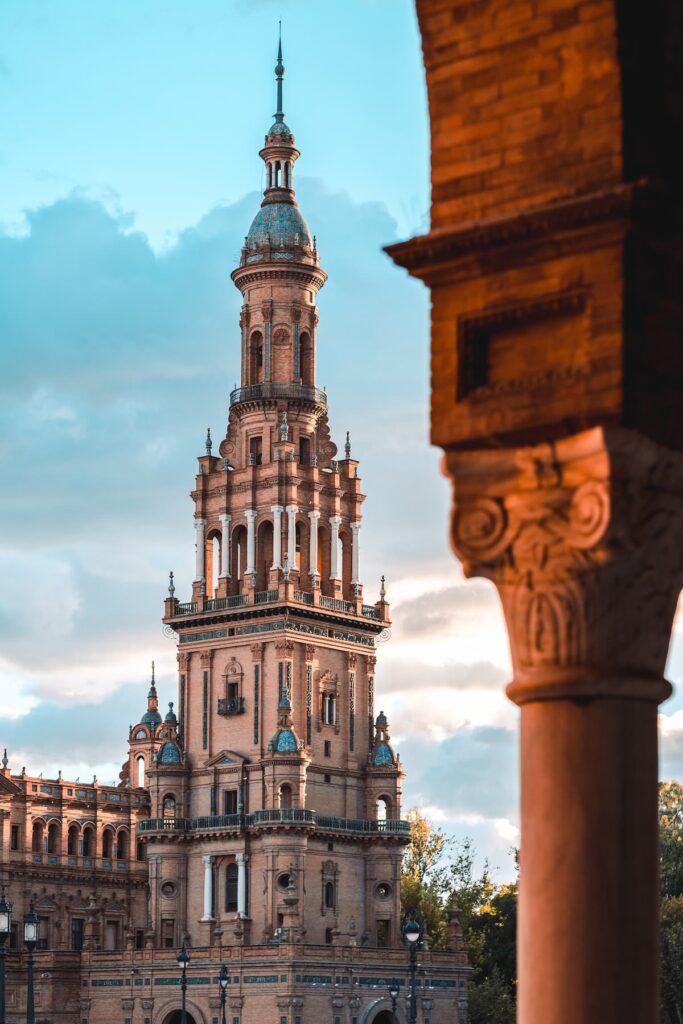
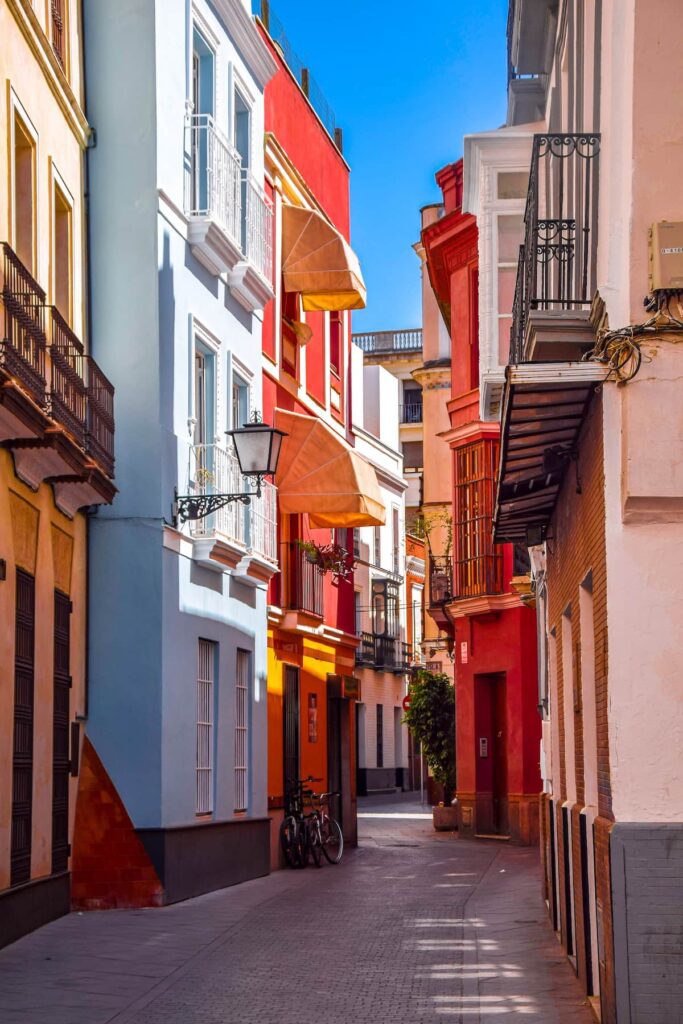
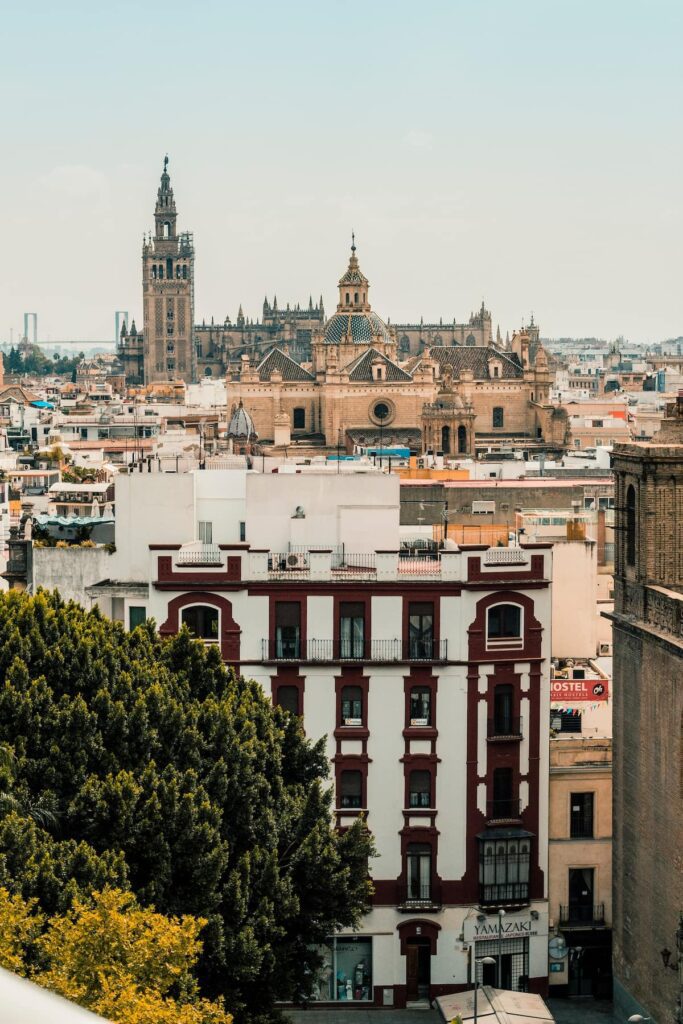
What to Do in Seville, Spain
Here’s a quick overview of the best things to do in Seville, Spain:
- Marvel at the Real Alcázar: This stunning palace complex is one of Seville’s top attractions, with its beautiful gardens, intricate architecture, and fascinating history. Here, you’ll get a closer look at the city’s Moorish past and it’s a wonderful complement to the Alhambra, if you’re visiting Granada as well.
- Explore the Cathedral of Seville: This massive Gothic cathedral is the third largest in the world and boasts impressive features such as the Giralda Tower and the tomb of Christopher Columbus. The walk up the Giralda is long and steep but the view is totally worth it!
- Wander around the Santa Cruz neighborhood: This charming, historic district is filled with narrow streets, picturesque courtyards, and traditional houses, making it the perfect place to wander and soak up the local culture. I’ve gotten delightfully lost in this neighborhood but didn’t mind it at all.
- See a flamenco performance: Seville is known as the birthplace of flamenco, and there are many opportunities to experience this passionate dance form through performances at local venues. I’ve watched flamenco twice in Seville and both times, the performances were so emotional and moving.
- Wander around the Plaza de España: When you say Seville, it’s often a picture of the Plaza de España that comes to mind. This iconic landmark is a must-see, with its grand size, stunning architecture, and intricate tilework depicting each province of Spain. If you’re lucky, you might come across flamenco artists performing here… it’s such a cool experience!
- Explore the Triana neighborhood: For a more authentic, down-to-earth side of Seville, head across the river to Tirana. This lively and colorful district is known for its vibrant nightlife, local markets, and ceramic shops. Tirana feels more lived-in and real and it’s fun to wander around the neighborhood.
- Go to the Metropol Parasol (aka Las Setas): Here, you can enjoy a more quirky side of Seville. This modern and innovative wooden structure is a unique addition to Seville’s skyline and provides stunning views of the city. You’ll find a mix of locals and tourists just hanging out and it’s a great place to people-watch.
- Visit the Museum of Fine Arts: Calling all art-lovers! This museum houses an impressive collection of Spanish art, including works by famous painters such as Velázquez and Murillo. (Pssst, entry is free for EU nationals!)
- Stroll along the Guadalquivir River: If you want a spot of relaxation, a walk along the Guadalquivir will do the job. This scenic river provides a unique perspective of Seville, with views of iconic landmarks such as the Torre del Oro and the Maestranza bullring. Take in the sunshine, the sights, and mingle with locals.
- Visit the Mercado de la Encarnación: I love learning about a city through its food and there’s no better way to do that than to visit a local market. This indoor market is a food lover’s paradise, with its wide variety of fresh local produce, meats, and seafood.
These top 10 attractions provide a well-rounded experience of Seville’s history, culture, and beauty and you can easily cover them in 3 to 4 days! For the full list of things to do in Seville, click here.
And the fun doesn’t stop in Seville when the sun sets – check out the best things to do in Seville at night.
If you’re looking to spend some time by the sea, check out the best beaches close to Seville.

Recommended Tours & Activities in Seville
- Discover the city’s highlights on a free walking tour! I love walking tours and take them whenever they’re available. They’re an awesome way to get to know a city when you first arrive.
- The line to enter Seville Alcazar is notoriously long (I once had to change my plans as the line was too long!) so it’s good idea to skip the line and buy your ticket in advance. If you’re a history lover like me, then you may also be interested in a guided tour of the monument so that you can learn more about its history.
- The Seville Cathedral is also a super popular tourist attraction. Click here to buy your entry ticket (includes the Giralda) in advance.
- Want to visit the Alcazar, Cathedral, and Giralda in one day? Join a local guide in this 2.5-hour tour which includes all entry tickets.
- It’d be a shame not to watch flamenco while in Seville! Check out this flamenco show in a historic venue or this flamenco show in Tirana.
- Enjoy a relaxing day out on the river on this 2-hour yacht tour when you can admire Seville from the water.
- Get acquainted with some of the best spots to eat in Seville in this tapas crawl (yummy!).
- Shop at the market like a local and learn how to make traditional Spanish dishes in this cooking class in Seville.
Here are other popular activities in Seville:
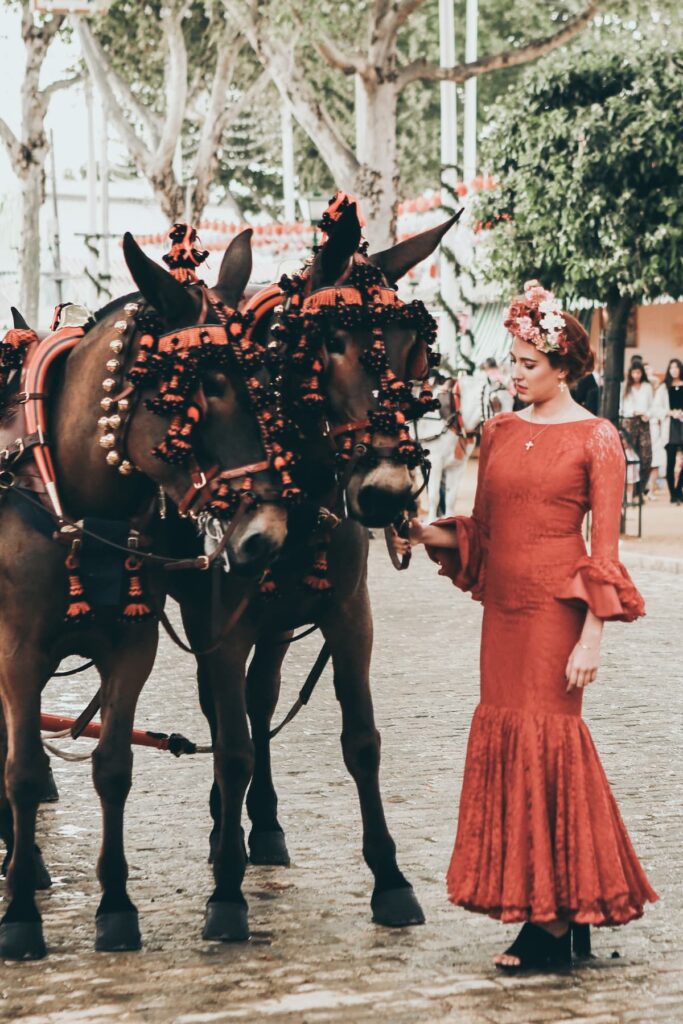
Festivals in Seville
Seville is known for its vibrant and colorful festivals which celebrate the city’s rich history and culture. These three festivals provide a glimpse into Seville’s rich history and culture, and they are a great way to experience the city’s unique traditions and customs.
Semana Santa (Holy Week)
Semana Santa is a major religious holiday in all of Spain and it is especially impressive in Seville. The celebrations in Seville are said to date back to the 16th century and today, the traditions live on.
Locals spend all year preparing for this week-long festival thattakes place in the week leading up to Easter.
Processions of elaborately decorated floats (called pasos) carrying statues of the Virgin Mary and Jesus, wind through the streets of Seville, accompanied by the mournful sound of music played by marching bands. Some of the processions last up to 12 hours with devoted locals carrying the pasos!
The main processions take place in the city center, around the Cathedral and other historic churches. You can get more infromation on the Semana Santa routes in Seville on this website.
Tip: For a memorable sight, stand by the river and watch the processions come from Triana over the Puente de Isabel II.
Feria de Abril
This week-long festival of music, dancing, and traditional dress is one of the most important events on the Sevillian calendar. Feria de Abril typically takes place two weeks after Holy Week, and it celebrates Seville’s cultural heritage.
The fairground is set up in the district of Los Remedios, with hundreds of colorful tents (called casetas) set up for eating, drinking, and dancing. The streets are filled with people wearing traditional flamenco dresses and suits, and the atmosphere is festive and joyful. Expect horse-drawn carriages, flamenco music, and tons of fun!
The fair also features a large amusement park, with rides and attractions for all ages. Feria de Abril is an unforgettable way to experience Seville’s vibrant culture and traditions.
Bienal de Flamenco
If you love music and dance, then you can’t miss the Bienal de Flamenco in Seville.
This biennial festival celebrates flamenco, a traditional Spanish art form that combines singing, dancing, and guitar playing. Today, it is one of the most important flamenco festivals in the world.
During the Bienal de Flamenco, you’ll find performances by some of the most renowned flamenco artists, as well as up-and-coming talents. The shows take place in various venues throughout the city, including historic theaters, flamenco clubs, and outdoor stages.
The festival also offers workshops, lectures, and exhibitions that explore different aspects of flamenco culture so it’s the ideal time to learn about the history and evolution of flamenco, as well as the various styles and techniques used in the art form.
The Bienal de Flamenco is a unique opportunity to experience the passion and intensity of flamenco, and to immerse oneself in the rich cultural heritage of Seville. It is a must-see for anyone interested in flamenco or Spanish culture.
The festival will be next held in 2024. For more information, check out the official website.
Tip: Seville goes into overdrive when there’s a festival so if you’re planning a visit during one of these times, it’s a good idea to book your accommodation in advance.
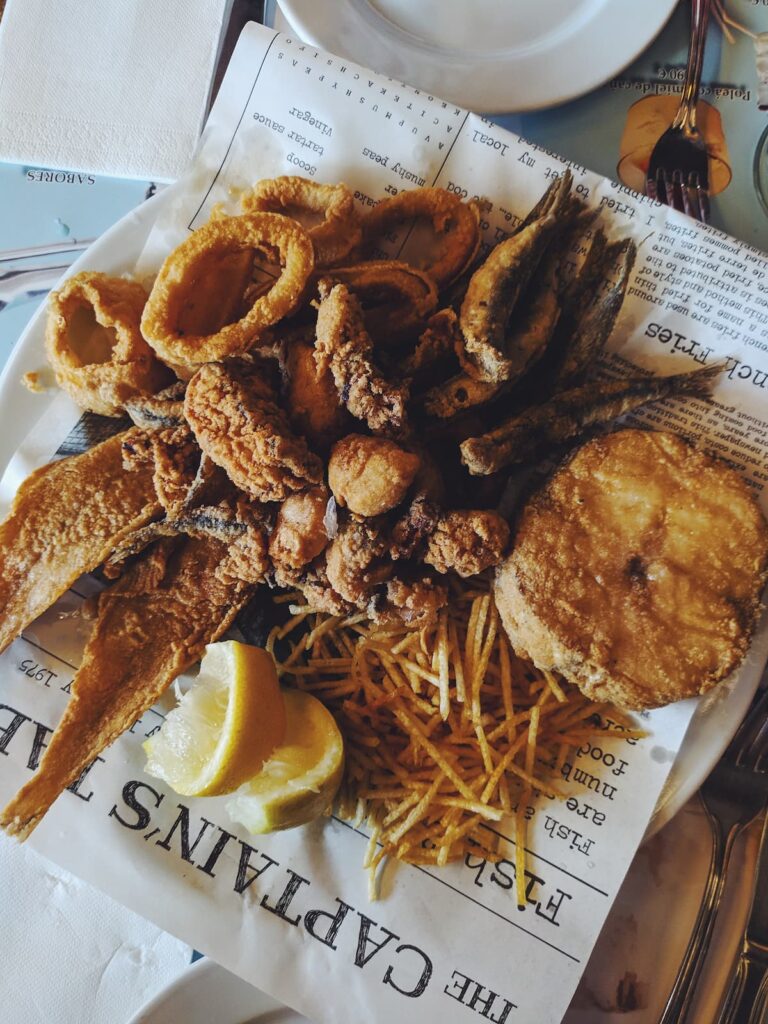
What to Eat in Seville
Ain’t nothing like food to get to know a place! If you’re excited to check out Seville’s culinary delights, you won’t be disappointed! Here, you’ll find some Spanish national favorites but also some local delicacies that are unique to the icty.
Some of the most popular local dishes and must-try foods in Seville include:
- Tapas: Seville is famous for its tapas, small plates of food that are perfect for sharing. Some popular tapas dishes include tortilla española (Spanish omelet), croquetas (deep-fried balls of bechamel and filling), and montaditos (small sandwiches).
- Gazpacho: This cold soup is made with tomatoes, peppers, cucumbers, bread, olive oil, and garlic. It’s perfect for hot days in Seville and is a refreshing and healthy option.
- Pescaíto frito: This is a fried fish dish that is popular throughout Andalucia. It’s usually made with small fish such as anchovies or sardines, and it’s often served as a tapa.
- Huevos a la Flamenca: This dish consists of baked eggs in a tomato sauce with chorizo, ham, and vegetables. It’s a hearty and flavorful dish that is perfect for breakfast or brunch.
- Solomillo al Whisky: This is a pork tenderloin dish that is cooked with whisky, garlic, and olive oil. It’s a classic Sevillian dish and is often served as a main course.
Sevillanos also love their desserts, and there are many delicious options to choose from, such as tocino de cielo (a rich egg yolk dessert), torrijas (similar to French toast), and yemas de San Leandro (sweet egg yolk candies).
So, as you wander around Seville, don’t forget to spot these items on the menu and give them a try!
